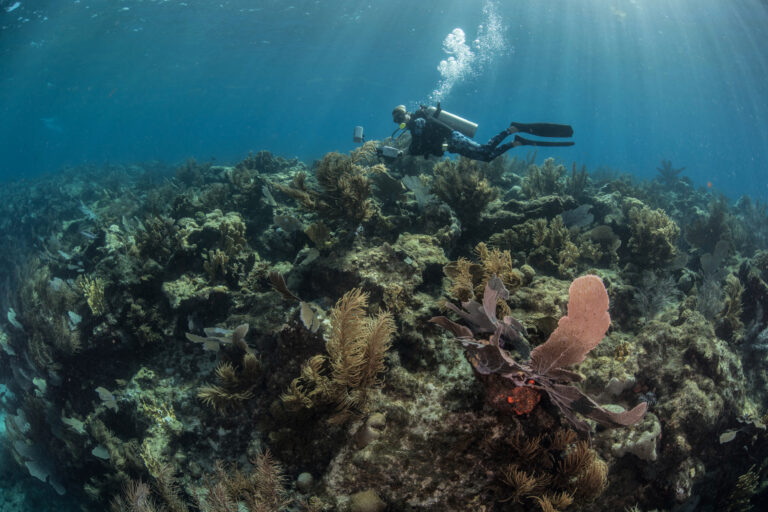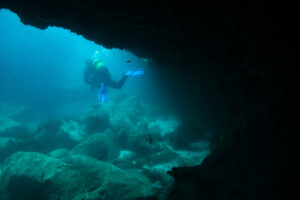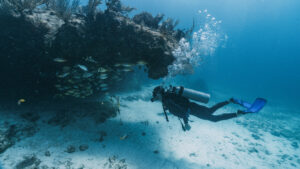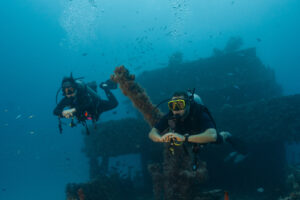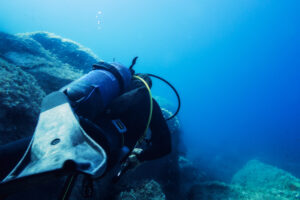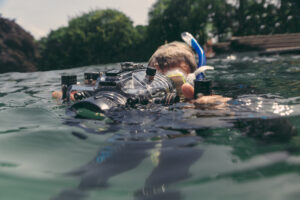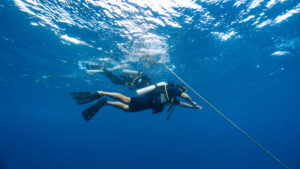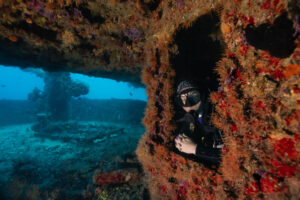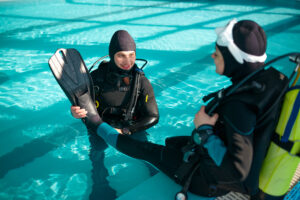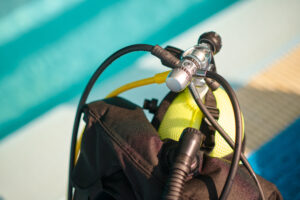What is Hypoxia when Scuba Diving?
Hypoxia, defined as a deficiency of oxygen in the body, is a significant concern for scuba divers, as it can impair vital bodily functions, reduce consciousness, and lead to life-threatening conditions. This medical issue becomes especially relevant in the context of scuba diving, where a diver’s environment and the unique breathing conditions can increase the likelihood of insufficient oxygen levels. Hypoxia is not always immediately apparent, but recognizing and understanding its causes, symptoms, and prevention strategies can help divers stay safe underwater.
Scuba divers operate in an environment where they are dependent on artificial gas supplies, and various factors can affect the oxygen content they inhale. Mismanagement of these elements may lead to hypoxia. Furthermore, the effects of pressure changes underwater, increased nitrogen levels, and physical exertion can also contribute to a diver’s susceptibility. With this understanding, divers must ensure proper preparation, equipment checks, and monitoring throughout the dive.
Learning about hypoxia and its impact on scuba diving can help divers take proactive measures to safeguard themselves. This includes not only recognizing its causes but also preparing for potential emergencies. By staying informed and cautious, divers can mitigate the risks associated with oxygen deprivation and improve their chances of a successful and safe dive.
Causes of Hypoxia in Scuba Diving
Several factors can lead to hypoxia during a dive. These causes are usually tied to the availability and quality of breathing gases, physiological responses, and environmental conditions. While these causes may vary in severity and frequency, each one requires attention to avoid the consequences of low oxygen levels underwater.
One of the leading causes of hypoxia is an improper breathing gas mixture. Scuba divers rely on tanks filled with gas mixtures that contain oxygen and other gases such as nitrogen or helium. If the oxygen concentration in these mixtures is too low due to errors in preparation, equipment malfunction, or contamination, the diver may experience hypoxia. This risk is particularly elevated in technical diving, where gas mixtures are more complex and require careful management.
Shallow water blackout is another potential cause of hypoxia. This phenomenon occurs when a diver hyperventilates before descending, which decreases carbon dioxide levels in the bloodstream. With lower levels of carbon dioxide, the urge to breathe may be delayed, causing the diver to miss critical signals of oxygen deprivation. When ascending from deeper water, particularly at shallow depths, a diver can lose consciousness suddenly and without warning.
Gas narcosis, or nitrogen narcosis, can also play a role in hypoxia. At greater depths, the partial pressures of gases such as nitrogen increase, leading to impaired cognitive and motor functions. This altered mental state may prevent a diver from recognizing early signs of hypoxia or responding effectively, exacerbating the risk. While gas narcosis is not a direct cause of hypoxia, its presence can make a diver more vulnerable to oxygen deprivation.
Additionally, pre-existing medical conditions can increase the likelihood of hypoxia. For instance, individuals with anemia, heart disease, or lung conditions may have a reduced capacity to deliver oxygen to their tissues. Obesity and other health factors can also affect circulation, limiting oxygen transport and heightening the risk of hypoxia. Proper medical evaluations before diving can help identify and manage these risk factors.
Types of Hypoxia in Scuba Diving
Hypoxia manifests in several different forms, each with unique causes and effects on the body. In the context of scuba diving, understanding these types can help divers identify the most likely threats and respond accordingly.
Hypoxic hypoxia occurs when the oxygen concentration in the breathing gas is too low to support normal physiological functions. This type of hypoxia is typically associated with incorrect gas mixtures or equipment failure. It can also occur when diving at very high altitudes, where the ambient pressure is reduced, limiting oxygen availability. Divers need to ensure that their gas mixtures contain adequate oxygen levels for the planned dive and monitor their equipment closely to avoid hypoxic hypoxia.
Stagnant hypoxia results from poor blood circulation, which prevents oxygenated blood from reaching the body’s tissues. Cold water can constrict blood vessels and reduce circulation, leading to this form of hypoxia. Additionally, tight-fitting wetsuits or drysuits can impede circulation, increasing the risk. Divers with pre-existing cardiovascular issues may be more susceptible to stagnant hypoxia, and careful attention to dive gear and environmental conditions is essential to minimizing this risk.
Histotoxic hypoxia occurs when the body’s cells cannot utilize the oxygen that is delivered to them. This is often caused by the presence of toxins in the bloodstream, such as alcohol or certain medications. These substances can impair the cells’ ability to metabolize oxygen, leading to hypoxia even if oxygen levels in the blood are sufficient. Divers who are taking medications or consuming alcohol before a dive should be aware of the increased risks associated with histotoxic hypoxia.
Anemic hypoxia arises when the blood’s capacity to carry oxygen is reduced. This can occur due to anemia or the presence of carbon monoxide in the blood, which binds to hemoglobin and prevents oxygen transport. Divers who smoke or are exposed to carbon monoxide through contaminated air sources are at greater risk for this type of hypoxia. Regular equipment checks and awareness of environmental factors can help prevent anemic hypoxia during a dive.
Symptoms of Hypoxia in Scuba Diving
Identifying hypoxia in its early stages is crucial for preventing serious consequences during a dive. While the symptoms may initially seem subtle or unrelated, being familiar with the common signs can help divers take action before the situation worsens. Many of these symptoms are non-specific, which makes it all the more important for divers to pay close attention to their physical condition.
Shortness of breath or rapid breathing is one of the first indicators of hypoxia. As oxygen levels drop, the body instinctively tries to compensate by increasing the rate of respiration. Divers who notice a change in their breathing patterns should immediately assess their oxygen supply and consider whether hypoxia might be a factor. This symptom may be accompanied by an increased heart rate, as the body works to circulate oxygen more efficiently.
Mental confusion, disorientation, or impaired judgment are other common signs of hypoxia. Oxygen is critical for brain function, and a lack of it can quickly affect cognitive abilities. Divers may struggle to make decisions or experience difficulty concentrating. Dizziness, lightheadedness, or a loss of coordination may follow, further complicating the diver’s ability to respond to the situation. These symptoms can be especially dangerous underwater, where precise movements and clear thinking are essential for safety.
Physical symptoms of hypoxia include cyanosis, which is a bluish discoloration of the skin, particularly around the lips and nail beds. This occurs when oxygen levels in the blood fall below normal, leading to a visible lack of oxygenation in the tissues. Fatigue and weakness may also develop as muscles become deprived of oxygen. Additionally, visual disturbances, such as tunnel vision or blurred vision, can occur, further signaling that oxygen deprivation is affecting the body.
As hypoxia progresses, the symptoms may worsen, eventually leading to unconsciousness, seizures, or death if not addressed. Recognizing the early signs and taking immediate action can prevent these severe outcomes.
Management of Hypoxia in Scuba Diving
Proper management of hypoxia is critical for ensuring a safe diving experience. Both prevention and response strategies are essential components of managing hypoxia in the underwater environment. Divers should be proactive in preventing hypoxia, but also prepared to respond if symptoms arise.
Prevention begins with ensuring that the correct gas mixture is used for the dive. Divers should verify the oxygen content of their gas mixture using an analyzer before every dive, particularly when using specialized gas blends like nitrox or trimix. Hyperventilation before diving should be avoided, as this can reduce carbon dioxide levels in the blood and increase the risk of shallow water blackout. Regular maintenance of diving equipment is also important to prevent malfunction or contamination of the gas supply.
Medical evaluations and clearances should be obtained prior to diving, especially for individuals with pre-existing health conditions such as anemia, heart or lung disease, or other conditions that may affect oxygen delivery. Educating dive buddies on the signs and symptoms of hypoxia can also enhance safety, as they may be able to recognize the issue in a fellow diver and assist with emergency procedures.
In the event that hypoxia is suspected, the dive should be terminated immediately, and the diver should begin a controlled ascent. If possible, the diver should switch to an alternate gas supply with a higher oxygen content. Once at the surface, the diver’s equipment should be removed, and an open airway maintained. Administering 100% oxygen, if available, can help stabilize the diver while monitoring their condition closely. If the diver becomes unconscious, rescue breathing or CPR should be initiated, and emergency medical assistance should be sought immediately.
In cases where carbon monoxide poisoning is suspected, hyperbaric oxygen therapy may be required to treat the condition effectively. Divers should seek immediate medical attention in such cases, as carbon monoxide can significantly impair the blood’s ability to carry oxygen.
Precautions for Technical Divers
Technical divers, who engage in more complex and challenging diving activities, face additional risks related to hypoxia. These divers often use various gas mixtures, such as nitrox, trimix, or heliox, and dive to greater depths where the risk of gas-related issues increases. As a result, technical divers must take extra precautions to prevent and manage hypoxia.
Careful planning and analysis of gas mixtures are essential for technical divers. Verifying oxygen content using an analyzer ensures that the correct mixture is being used. Additionally, technical divers should employ gas management strategies, such as carrying redundant gas supplies and using gas-switching procedures to maintain appropriate oxygen levels throughout the dive.
Monitoring gas consumption and partial pressures of oxygen (PPO2) is crucial for technical divers. Dive computers and other monitoring devices can help divers keep track of their oxygen levels and alert them to potential hypoxia risks. Regular training on advanced diving techniques, equipment usage, and emergency procedures is also critical for technical divers to stay prepared for any situation.
Key Takeaways
Hypoxia presents a significant risk for scuba divers, with serious consequences if not properly managed. Understanding the causes, types, symptoms, and management strategies associated with hypoxia allows divers to take proactive measures to prevent oxygen deprivation during a dive. Through education, proper equipment maintenance, and vigilance, divers can reduce the risk of hypoxia and enjoy safer underwater experiences.

